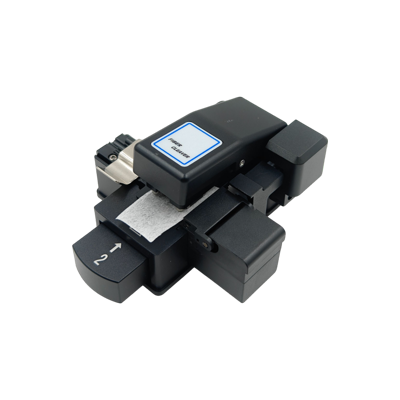Cable & Wire | High quality and excellent service at reasonable prices.
info@zion-communication.com
Author: James Publish Time: 28-07-2025 Origin: Site
The primary definition of fiber optic splicing refers to the process of welding two optical fibers in such a way that they form a secant for transmitting light information. It is a decisive operation in fiber optic networks aimed at minimizing signal loss and reflection for improving the speed and distance of data transmission.
In network installations, repairs, and upgrades, splicing is of crucial assistance. The correct splicing preserves the sign of integrity, limits the time of network down, and extends the life expectancy and performance of the fiber connection.


Mechanical Splicing
Aligns fibers by means of an accurate precision alignment apparatus, including a mechanical splice assembly.
It does so without melting glass, but rather uses gel or adhesive deployed in the splice in order to achieve the maximum reduction in signal loss.
The low cost (nearly $100 for assembling the tools) makes it an appropriate choice for small projects with short-term performance.
Fusion Splicing
Uses an electric arc to melt the roots and join the fiber into one single continuous fiber.
The lowest loss and reflection essentially create one continuous fiber, almost as if the two original separate fibers never existed.
High cost equipment (usually over $10,000) is the requirement of this kind of installations, which are mainly used for large networks or very critical business operations.
Preparation plays an essential role in the joining process, irrespective of the splicing method used.
Operate in a protected and well-lit place that is recommended for above-ground exploration; the fiber-optic mat is good for protecting fibers and got rid of scraps.
Remove 3 cm approximately of the outer protection filament and the coat extremely careful and ensure that the bare glass is revealed without any weakening of the glass.
Make sure the bare fiber is wiped off with a non-woven fiber cloth and cleaned with a fiber optics cleaning fluid.
Create a cleave through the fiber using a precision cleaver with a flat, perpendicular endface with an angle deviation of less than 1 degree (≤1°).
To this end, the confirm cleave length is done according to the fusion manufacturer’s guidelines.

Tool / Material | Description |
Cable Stripper / Fiber Stripper | Removes outer jacket, buffer, and coating layers |
Precision Fiber Cleaver | Ensures a clean, flat end face for low-loss fusion |
Fusion Splicer | Aligns and fuses fiber ends using a high-voltage electric arc |
Heat-Shrink Protection Sleeve | Protects the spliced point with internal strength member (often with steel rod) |
Heater / Heat Oven | Shrinks the protective sleeve to secure the fusion point |
Cleaning Tools (Alcohol + Wipes) | Removes dust and oil from fiber surface |
Splice Tray / Enclosure | Stores spliced fibers neatly and securely for cable management |
OTDR / Optical Power Meter | Tests splice quality, insertion loss, and signal reflection |
Temporary Fiber Fixture / Workbench | Stabilizes fiber during splicing and shrinking process |
Carefully load the mechanical splice into the assembly tool and make sure the touching parts are not pressed.
Insert each prepared and cleaved fiber end from opposite sides of the splice and leave it until they stop.
Squeeze the handle of the assembly tool to lock the splice, and remove the assembly tool to see the precision alignment of the fibers.
Inspection of the spliced area will show whether the splice is uniform; if the attenuation is too high, the splice can often be reopened and redone.
Troubleshooting mechanical splices:
Examine cleave angle and length with great meticulousness; then, try re-cleaving them.
Inspect that fibers and splices are free from dirt or contamination.
Check whether the fibers are posted and aligned with the correct positions.
Tool / Material | Description |
Cable Stripper / Fiber Stripper | Removes cable jacket, buffer, and coating layers to expose the bare fiber |
Precision Fiber Cleaver | Cuts the fiber end face cleanly and flat for precise alignment |
Mechanical Splice Connector | Aligns and holds two fibers using a V-groove structure (disposable or reusable) |
Cleaning Tools (Alcohol + Wipes) | Cleans the fiber surface and end face before splicing |
Fiber Holding Jig / Clamp | Holds fibers steady during splicing to prevent misalignment |
Optical Power Meter | Verifies light transmission after splicing |
Fiber Protection Sleeve (Optional) | Offers additional mechanical protection (some connectors have built-in protection) |
Power on the fusion spicer, and set the required program/profile for the type of fiber under consideration.
Fix the tubing that shrinks to the inside of the tube over one fiber end with the second end pushing away from the area in which pots are spliced.
Do cleaning and preparation after the recommendation, then cut both fiber ends.
Push fiber ends into the fusion splicer between the electrodes having carefully aligned them under the microscope guidance.
Proceed with the fusion by applying an electric current; the heat or arc generated from the splicer melts the fiber ends creating a permanent joint.
Once the heat shrink tubing is over the splice, use the heat oven to shrink and seal the splice in order to protect the joint and reinforce it.
Troubleshooting fusion splices:
Inspect for cleave defects, bubbles, necking, or contamination, which can occur as a result of excessive heat sometimes.
Remember to scrub the fiber and the apparatus accurately before striving again.
Make sure to choose the correct program/profile within the splicer for all your settings.
When splicing, the joint area is very delicate, and an area that should be protected:
Push the cut tube along the shade of a heat-shrink sleeve (also containing adhesive and shielding filaments) for the splice.
The shrink oven for heat-shrinking travel sleeve or on the heating spindle of the fusion splicer are good tools for heating until all the film is securely tightened around the splice segment sealing it and protecting it from mechanical vibration or water.
Never overheat, which can scale or burn the sleeve or even the fibers.
Let the sleeve cool completely before beginning to work on it carefully or enclosing it inside the container.
Fiber splicing is a trade that requires skills, and it is in demand now and in the newest future as the fiber-optic networks expand around the globe. It offers:
Salary opportunities, promising and attractive for both company’s entry-level technicians as well as experienced professionals.
Career paths like field technician, installer, and fiber optic engineer.
Training programs and courses are available from bodies such as ETA or FOA, and certification is obtainable.
It is an absolute necessity to be proficient in mechanical and fusion splicing, cable preparation, and testing procedures.
Q: Can I make money splicing fiber optic cable?
For sure, fiber optic splicing is a trade with definite skill merits and salary prospects, especially where the deployment of fiber optic networks is on the rise. A majority of technicians are employed as contractors by telecom companies, and their pay rates depend on experience and location.
Q: Can you rent fiber optic splicing equipment?
Absolutely, these devices can be rented or leased from specialized companies. This means the rental is an option with saving your money in case of shortterm projects only. Be mindful of rental periods covering shipping days.
Q: How much does fiber splicing cost?
Costs depend on the method and scale. The price of mechanical splices ranges from approximately $7 to $25 for each splice, whereas the fusion splicing method requires a high investment for its equipment but the per-splice cost is low. Labour and material costs will differ and depend on the place of location.
Q: How much does fiber splicing pay?
The Fiber Splicing Technicians’ remuneration is very different in different countries, as well as in regard to the level of work experience. However, this metabolically highly important technical trade offers well-paid opportunities. Earnings for entry-level technicians are lower, but with industry certification and experience they increase.
Q: How much fiber should be exposed before splicing?
The bare fiber length, as given by the indicator manufacturers, is approximately 10 to 20 mm for the case of fusion splicing, but it may be longer or shorter in the case of mechanical splices. An adequate cleave length is important for reducing losses.
Q: How to connect fiber without a splicing machine?
Mechanical splicing is the technology that allows us to join two fibers without a fusion splicer. It works with the help of the alignment sleeves and gels. For temporary or emergency repairs, connectors or mechanical splices are viable alternatives.
Q: How to get certified in fiber optic splicing?
The certification can be obtained from organizations such as ETA International (FOA), BICSI, or other regional authorities. Training encompasses the skills of fiber preparation, splicing methods utilized, testing strategies, and safety pertinent and is composed of hands-on and written exams.
Q: How to get fiber splicing contracts?
The splicing contracts require the industry networking, certifications, proven record, and sometimes the involvement of telecom providers or contractors. Marketing your skills and reliability is key.
Q: How to learn fiber optic splicing?
The most effective way to learn is through professional courses, on-the-job training, or by taking up an apprenticeship. A variety of training centers offer practical workshops where both mechanical and fusion splicing methods are covered.
Q: How to start a fiber splicing business?
The process here involves the acquisition of technical skills, investment in equipment, certifications, business licenses, and strategies for marketing. The establishment of relationships with customers and maintaining matching premium standards is fundamentally important for the well-being of any business.
Q: Is fiber splicing hard?
It entails meticulous and careful work that requires precision and steady hands, yet everything gets under the control with right training and experience. Such as fiber types difference splicing complexness.
Q: What does a fiber optic splicing technician do?
They trim the finish of fiber, perform the mecha, or fusion splice, examine the splice quality by testing the basis of loss and reflection, and ensure the splices are according to the loss and reflection standards. Sometimes they do the installation, maintenance, and repairs of the fiber optic network.
Q: What is a choke point in fiber splicing?
A choke point stands for a point in the fiber theatre network where the complexity of the splicing or the organization of the fibers links are bottlenecking or have high loss, either because of the poor connection of the fiber or difficult access conditions.
Q: When is fiber unsuitable for splicing?
In cases where there is severe endface damage, the cleave angle is unavailable, and the presence of contamination, which is immovable. When damaged or nonmatching fibers are used in manufacturing, it may be required to change them.
Q: When is fiber unsuitable for splicing at what angle?
Increasing the cleave angle over one degree is not recommended since it leads to the higher splice loss. The key factor in the low-loss splice is systematically perpendicular cleaving of the fiber.
Q: Where can I rent fiber optic splicing equipment?
You could apply for rent from the companies that are dedicated to renting fiber tools, for instance, Fiber Instrument Sales, local distributors, or telecom equipment suppliers. Search online for regional rental options.
Fiber optic splicing is an underwriting element in building and retaining up to date communication infrastructure. Both methods (mechanical and fusion), completing the fiber meticulously and proper splice protection guarantee the low-loss and trustful optical links.
Besides entering into a career in fiber splicing, you will be also able to control a project on fiber splicing or troubleshoot splicing issues. Mastering these techniques is very essential for success.
Contact us for more information

James is a technical manager and associate at Zion Communication.
Specializes in Optical Fiber communications, FTTH Solutions,
Fiber optic cables, ADSS cable, and ODN networks.
james@zion-communication.com
+86 13777460328
